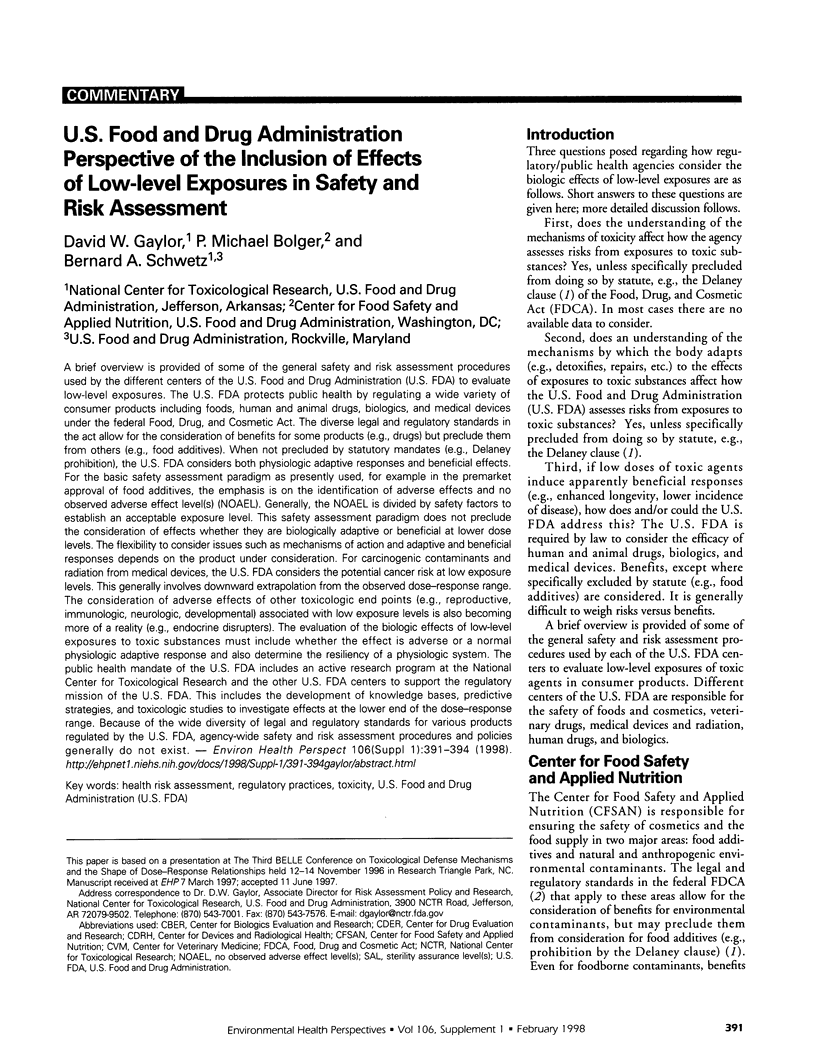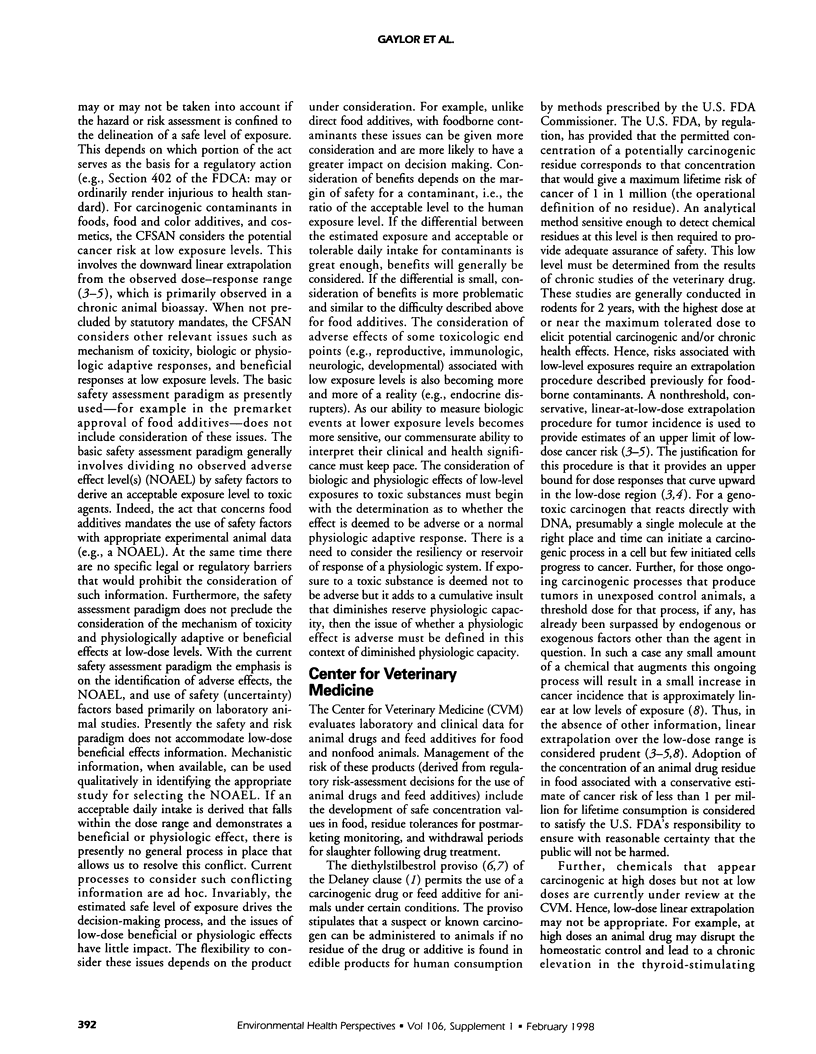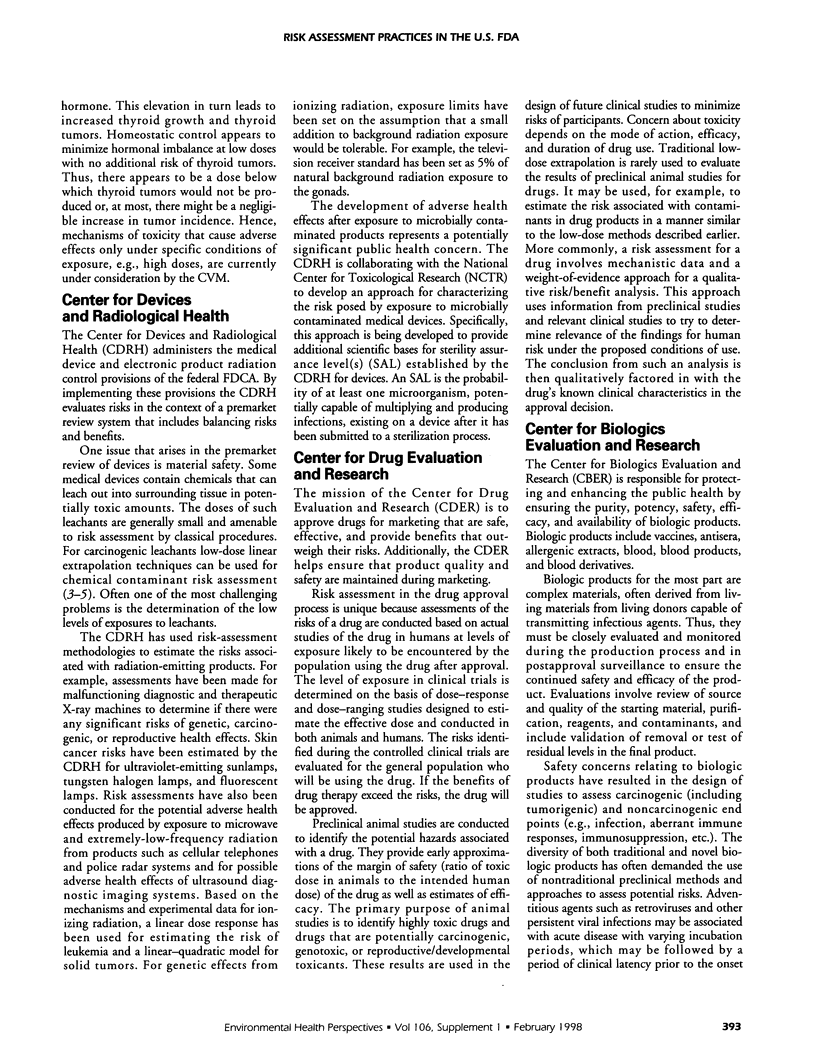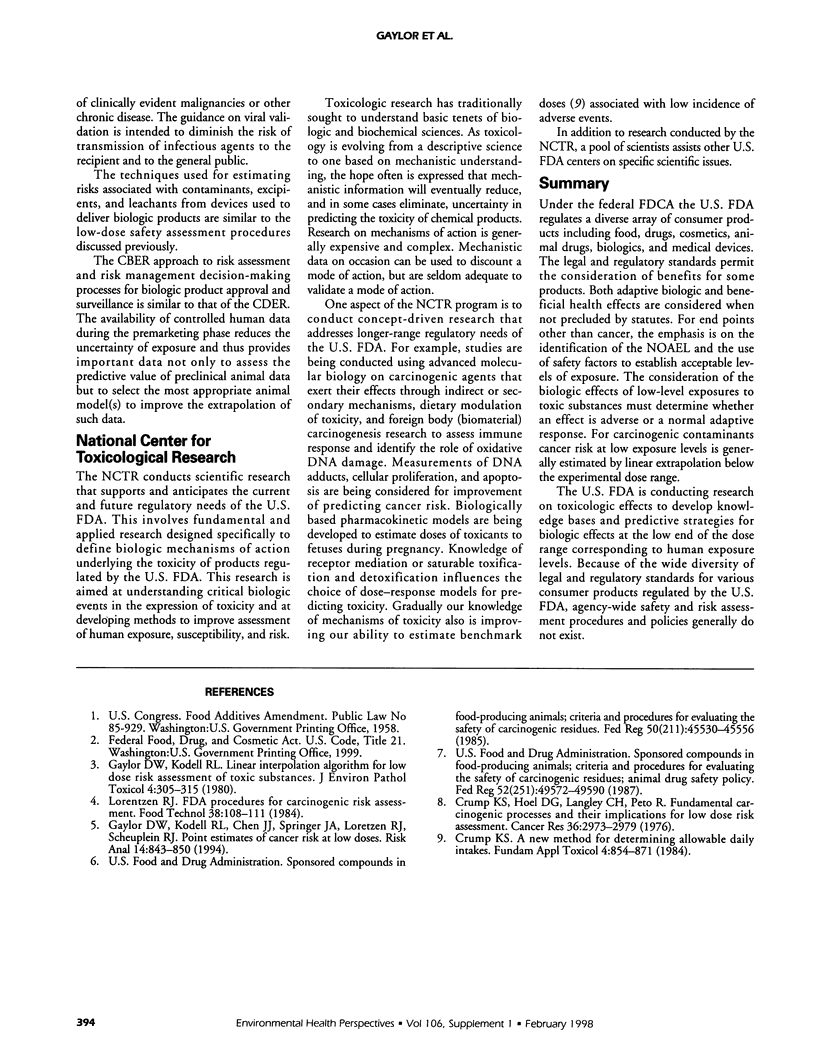Abstract
A brief overview is provided of some of the general safety and risk assessment procedures used by the different centers of the U.S. Food and Drug Administration (U.S. FDA) to evaluate low-level exposures. The U.S. FDA protects public health by regulating a wide variety of consumer products including foods, human and animal drugs, biologics, and medical devices under the federal Food, Drug, and Cosmetic Act. The diverse legal and regulatory standards in the act allow for the consideration of benefits for some products (e.g., drugs) but preclude them from others (e.g., food additives). When not precluded by statutory mandates (e.g., Delaney prohibition), the U.S. FDA considers both physiologic adaptive responses and beneficial effects. For the basic safety assessment paradigm as presently used, for example in the premarket approval of food additives, the emphasis is on the identification of adverse effects and no observed adverse effect level(s) (NOAEL). Generally, the NOAEL is divided by safety factors to establish an acceptable exposure level. This safety assessment paradigm does not preclude the consideration of effects whether they are biologically adaptive or beneficial at lower dose levels. The flexibility to consider issues such as mechanisms of action and adaptive and beneficial responses depends on the product under consideration. For carcinogenic contaminants and radiation from medical devices, the U.S. FDA considers the potential cancer risk at low exposure levels. This generally involves downward extrapolation from the observed dose-response range. The consideration of adverse effects of other toxicologic end points (e.g., reproductive, immunologic, neurologic, developmental) associated with low exposure levels is also becoming more of a reality (e.g., endocrine disrupters). The evaluation of the biologic effects of low-level exposures to toxic substances must include whether the effect is adverse or a normal physiologic adaptive response and also determine the resiliency of a physiologic system. The public health mandate of the U.S. FDA includes an active research program at the National Center for Toxicological Research and the other U.S. FDA centers to support the regulatory mission of the U.S. FDA. This includes the development of knowledge bases, predictive strategies, and toxicologic studies to investigate effects at the lower end of the dose-response range. Because of the wide diversity of legal and regulatory standards for various products regulated by the U.S. FDA agency-wide safety and risk assessment procedures and policies generally do not exist.
Full text
PDF



Selected References
These references are in PubMed. This may not be the complete list of references from this article.
- Crump K. S. A new method for determining allowable daily intakes. Fundam Appl Toxicol. 1984 Oct;4(5):854–871. doi: 10.1016/0272-0590(84)90107-6. [DOI] [PubMed] [Google Scholar]
- Crump K. S., Hoel D. G., Langley C. H., Peto R. Fundamental carcinogenic processes and their implications for low dose risk assessment. Cancer Res. 1976 Sep;36(9 PT1):2973–2979. [PubMed] [Google Scholar]
- Gaylor D. W., Kodell R. L., Chen J. J., Springer J. A., Lorentzen R. J., Scheuplein R. J. Point estimates of cancer risk at low doses. Risk Anal. 1994 Oct;14(5):843–850. doi: 10.1111/j.1539-6924.1994.tb00296.x. [DOI] [PubMed] [Google Scholar]
- Gaylor D. W., Kodell R. L. Linear interpolation algorithm for low dose risk assessment of toxic substances. J Environ Pathol Toxicol. 1980 Nov;4(5-6):305–312. [PubMed] [Google Scholar]


